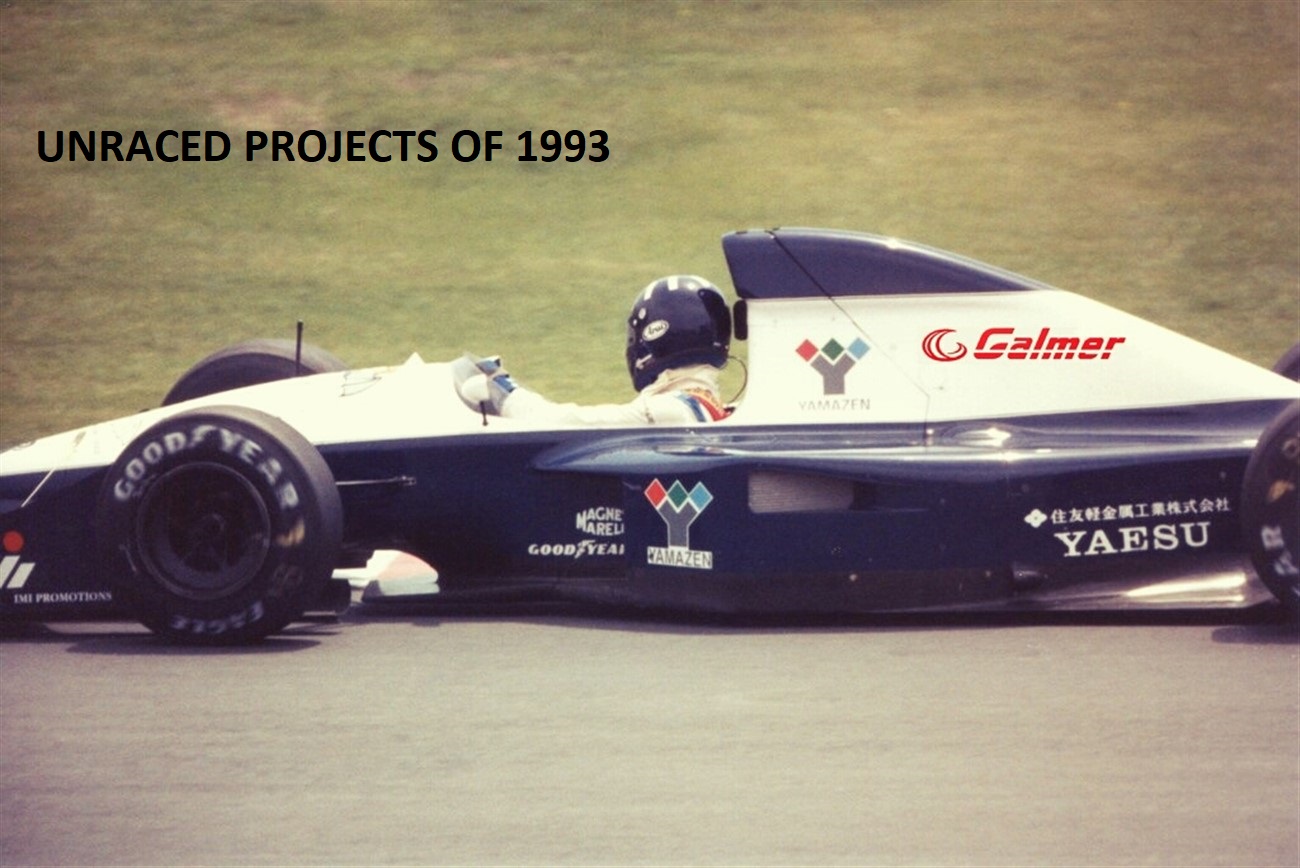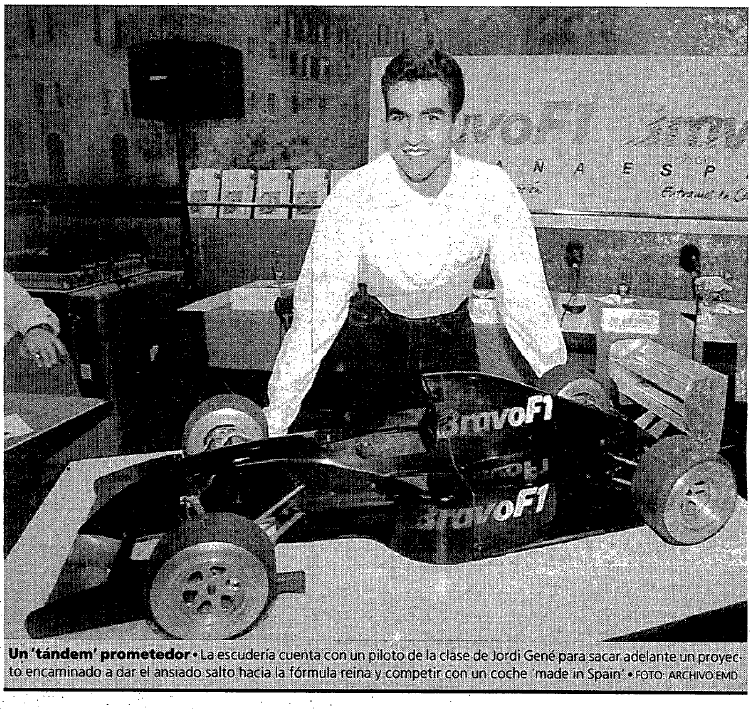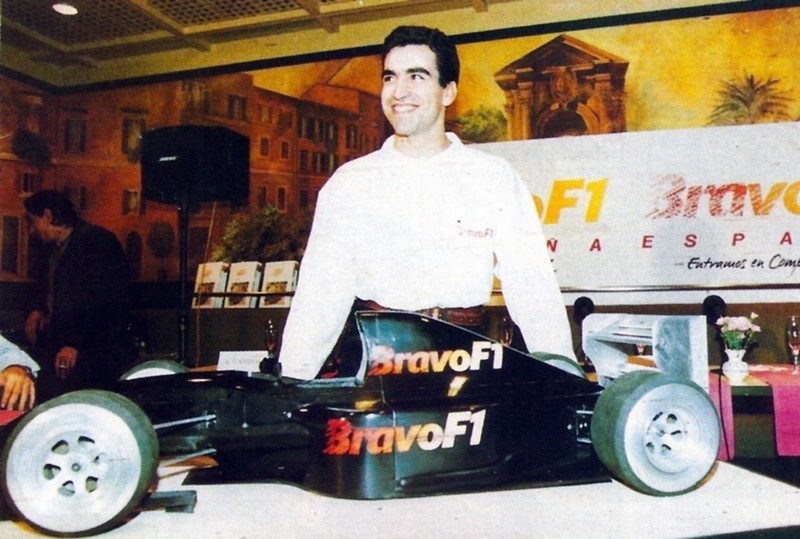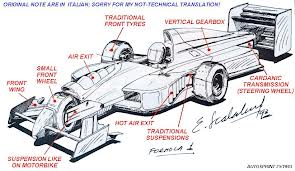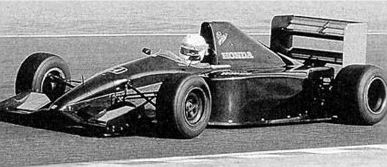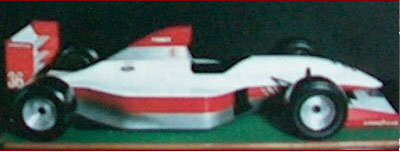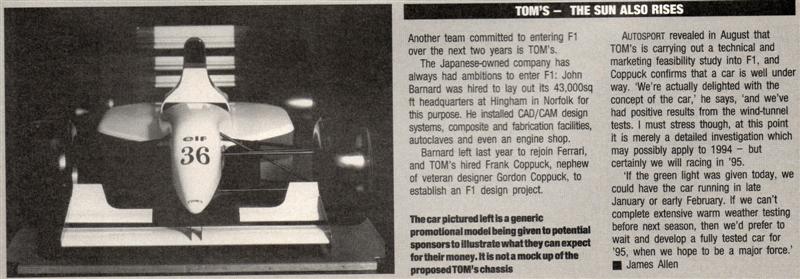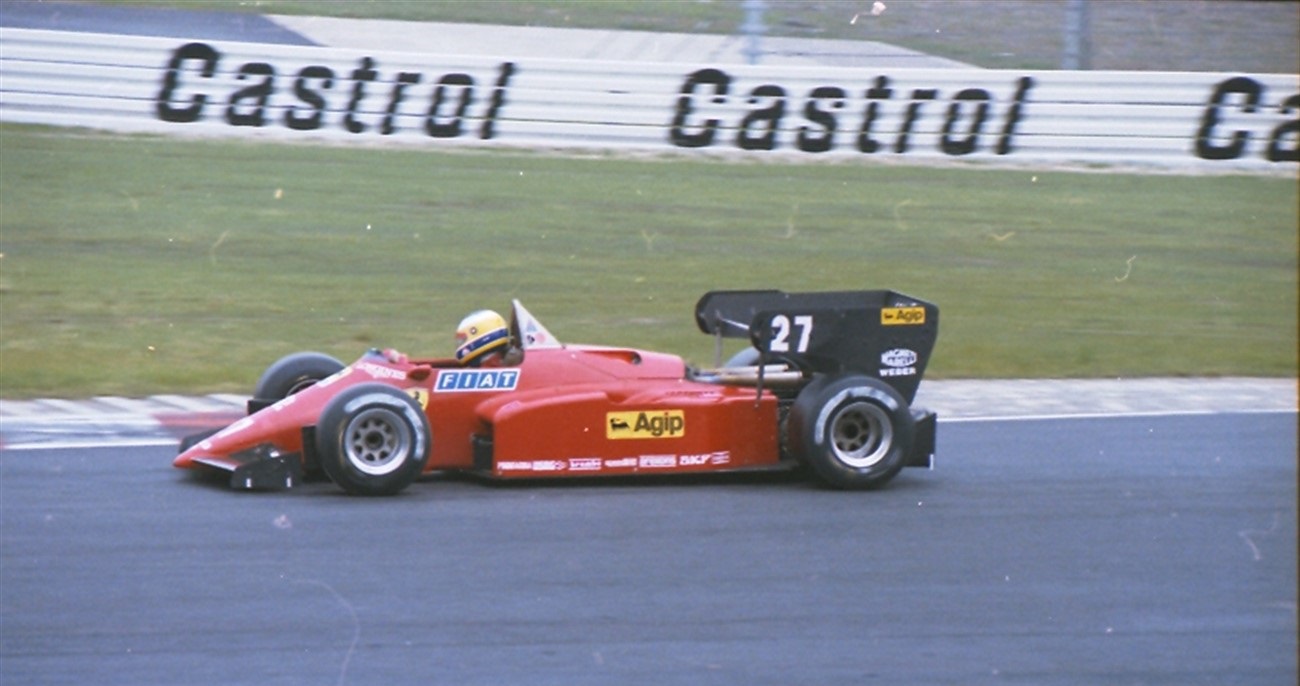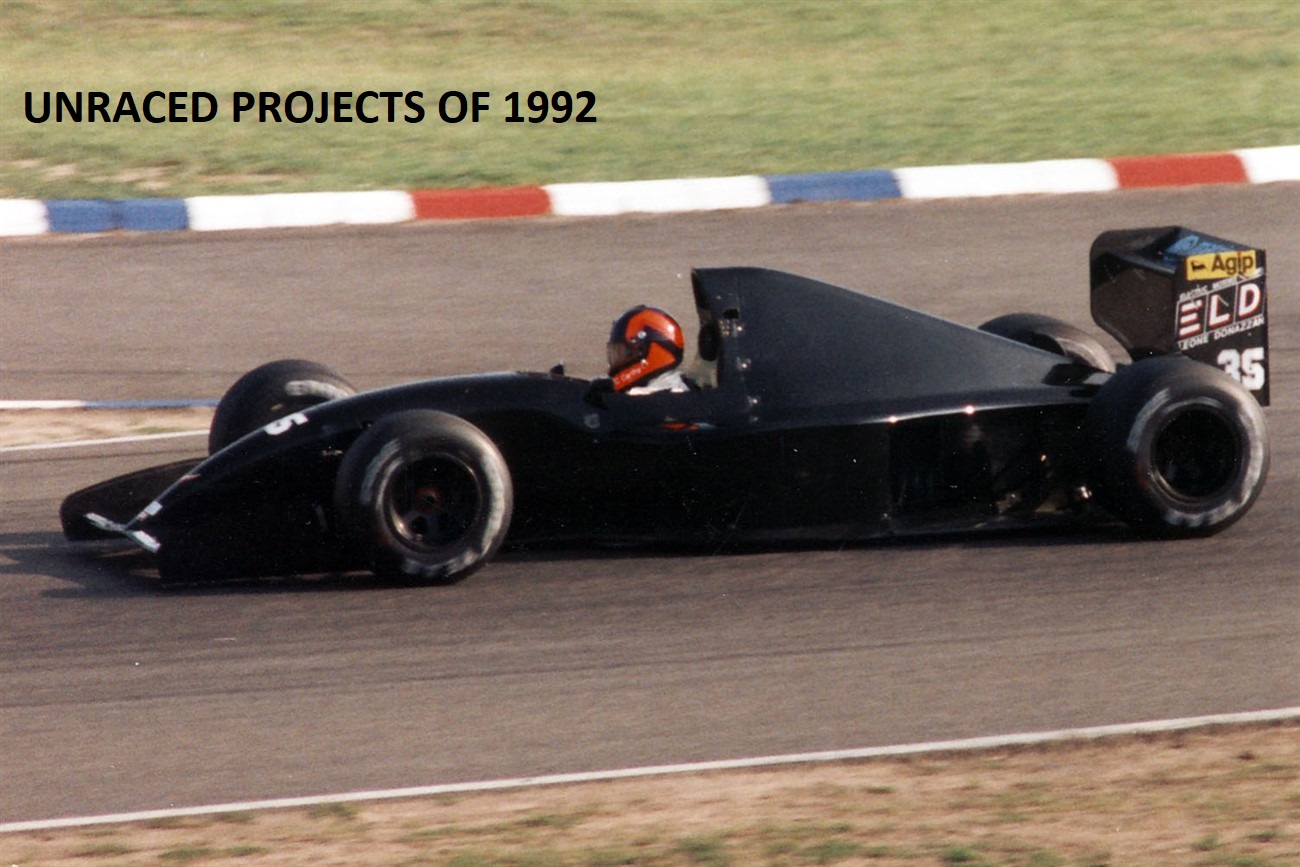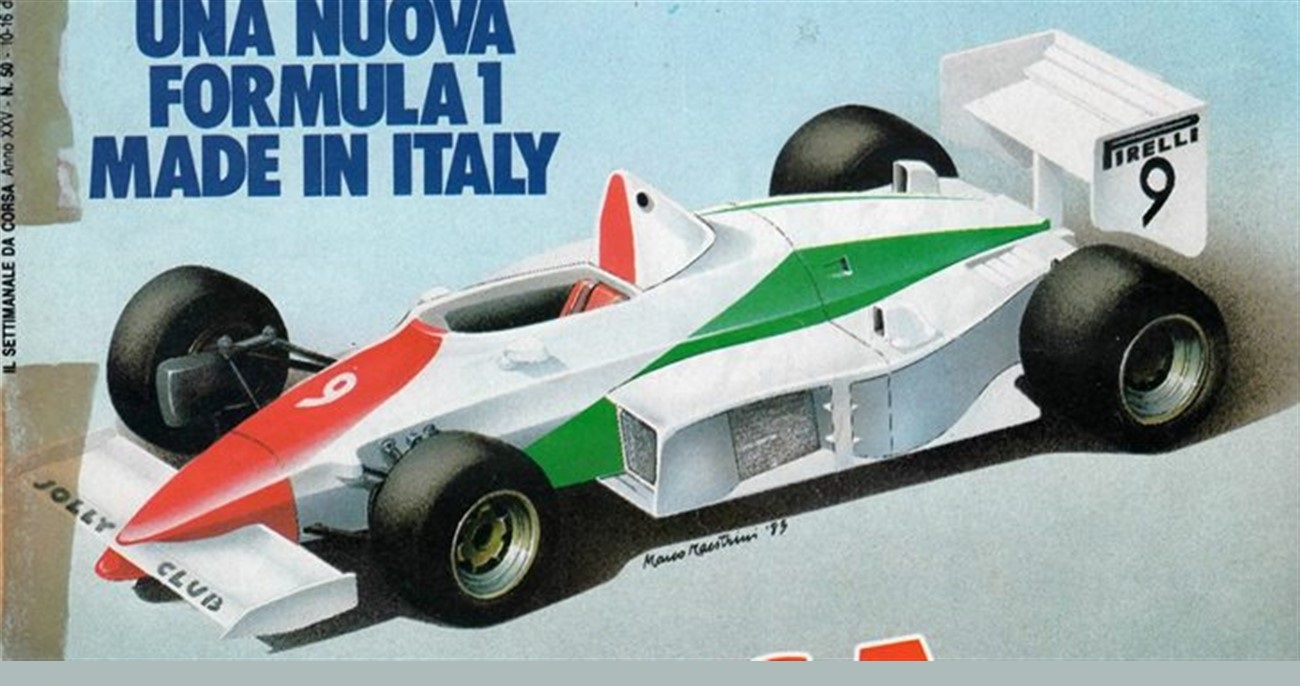1993 the year that Mansell left the Formula One, and Alain Prost became for the 4th time in his career the world champion. Sadly, it was also the year were several teams left the Formula One due financial issues. Brabham and Fondmetal had to withdraw from the grid, while it was certain that Andrea Moda would not re-appear on the grid for several reasons.
Brabham – Galmer BT60C
Brabham was in financial troubles during the 1992 season, after the last raceteam announced their withdraw from the grid. Several rumours appeared in the media stating that Brabham could returnon the grid in 1993. The most serious rumour was from Galmer. A month after Brabham withdraw from Formula One Galmer Engineering, led by Alan Mertens, boughtthe assets of the folded Brabham team. The BT60’s were send to Galmer and thecompany started to investigate to make a brand new design. However duefinancial issues, and two business man that failed in their promises the teamworked on the BT60. If Galmer would appear in the grid the BT60C would made it’sdebut. It never happened. Read the full story here.
Bravo-Judd S931
While Andrea Moda left the Formula One already in 1992, the next team arrived that based their car on the BMW S192 project. The Spanish Bravo team announced their entry for 1993 during a given press conference; Jordi Gené showed the media the mock up version of the Bravo S931. The team announced further that Jordi Gené would be one of their drivers and Judd would power it. Sadly, due financial struggle, as many teams, the Bravo-Judd S931 would never appear on the track. Read the full story here.
Dhainaut – Hart
After Andrea Moda
disappeared from the Formula One, basically got kicked from the grid by Bernie
Ecclestone, former designer of Andrea Moda Frédéric Dhainaut (on internet
mostly wrong written as Dhainault) started an project to see if it was possible
to build up his own Formula One team. It
was said that the old AGS assets would be used by Dhainaut to prepare is team
for an eventually debut in 1993 or 1994. While Frédéric spoke with Brian Hart
and Bernie Ecclestone the conclusion was that there were to many financial
risks to start up the team. Therefore the Dhainaut team would not appear on the
grid.
Dhainaut – Brabham
There was another rumour with Dhainaut involved for an eventually entry on the
grid in 1993. Rumours appeared that Frédéric Dhainaut was interested to take
over the Brabham team assets, even before Galmer was involved in a takeover. It
never happened the BT60’s and most of the assets of the folded Brabham team
went to Galmer.
Enrique Scalabroni
During the 1992 season, Enrique Scalabroni left Team Lotus to focus on his own “futuristic” F1 design. The car was futuristic indeed; the car had one wheel in the front, two wheels on the side of the car and one wheel attached to the back wing. The wheel in the back would also be the steering.
Fondmetal GR03
While Gabriele Rumi decided to quit Formula One and withdraw his Fondmetal team at the end of 1992, the team already started on the successor of the GR02 for the 1993 season the GR03. While the GR02 was similar to the GR01 suggested was that the GR03 was an brand new car which mirrored the high nose. Guido Forti bought the assets of the Fondmetal team, with it were the blueprints, that where made so far, of the GR03. Rumoured is that the Forti FG01 used several designs of the GR03. However, if you look more closely the FG01 has similarities with the Fondmetal GR02.
PTM 3000
It is not sure which former F3000 team announced their interest for an F1 entry
in 1993. Back then it was said it was PTM 3000. There is a lack on information
to have this investigated.
Honda RC101
The Honda RC101 was an evolved version of the Honda RC100, led by a couple of
Honda engineers. Saturo Nakajima tested the car at Suzuka, however not much is
known about the results that came from the testing. Later the chassis got
destroyed during an crash test.
March – Ilmor CG911C
After an bizarre after-season in 1992 and a unsure winter were an million dollar deal with Tamoil did not occur, as it was an scam, the team seemed to survived the winter and found enough money to arrive during the first race of the 1993 season with the slightly updated March CG911C. At Kyalami, it would be quickly clear that March had no engines, and no tyres to fit in and on the car. While Jan Lammers desperately tried to make a deal with Ilmor, by paying the bills from last season, the team would not appear on the grid. In addition, it meant the end for the March F1 team.
Pacific PR01
Pacific Grand Prix originally planned their Grand Prix debut in 1993 with the
PR01. During 1992 German Michael Bartels
was announced as their only driver for the 1993 season. The mock-up of the PR01
shown during the Tokyo motor show in 1992, looked far from the PR01 as it
debuted in 1994. Pacific Grand Prix
released a press release on the 1st of February 1993 stating that
the team would not make a late bid for an entry in 1993. Which meant that
Michael Bartels would not made the debut, and for 1994, he would not have a
contract either with the team.
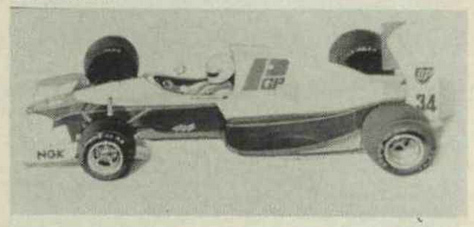
Peugeot Works F1 Team
In late 1992 the rumours appeared that Peugeot was working on a works F1 team led by Jean Todt. French mineral water company Perrier would sponsor the Peugeot team. Enrique Scalabroni penned an f1 design for the Peugeot Company, which mirrored the trends of the period. In the end, Peugeot decided to continue to supply teams with their engine. Jean Todt moved to Scuderia Ferrari to become one of their most successful team bosses. Read the full story here.

Simtek S931
While the Spanish Bravo team arrived with their Bravo S931, Simtek appeared later
in the season with another more radical S931. The S931 Nick Wirth came up with
looked far from the Simtek S941; the car would made its debut with in 1994. Especially around the front suspension and the
nose were more radical on the design.
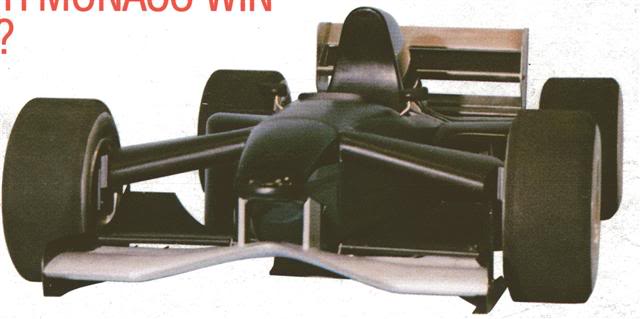
TOMS
Toyota tuner TOMS was working on their own Formula One project, not backed by
Toyota, in October 1993 the company showed their mock-up version of their Toms
F1 car. Gordon Coppuck designed the car. Probably the car was to be powered by
Ford and supplied with Goodyear tyres. However, the design stage of the TOMS F1
didn’t came further then the Wind tunnel.
Williams – Renault VDT FW15C
Williams FW15C was mated to a CVT transmission. The car, oddly running full-revs into the tight hairpins of Silverstone, was shelved after the FIA banned CVTs, and added a minimum-gears clause. The concept, however, was effective. Test-driver David Coulthard (the very same!) drove it about a second per lap quicker than average qualifying-times of those days.

